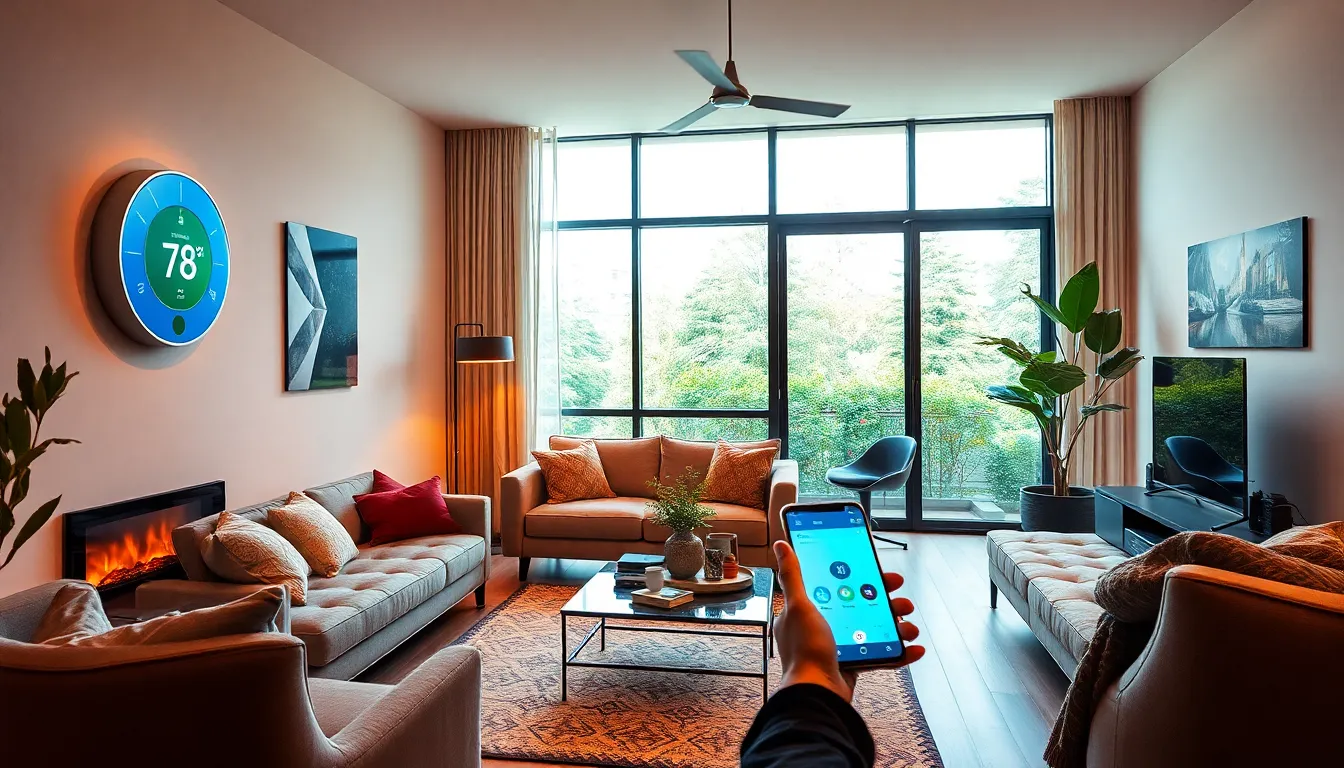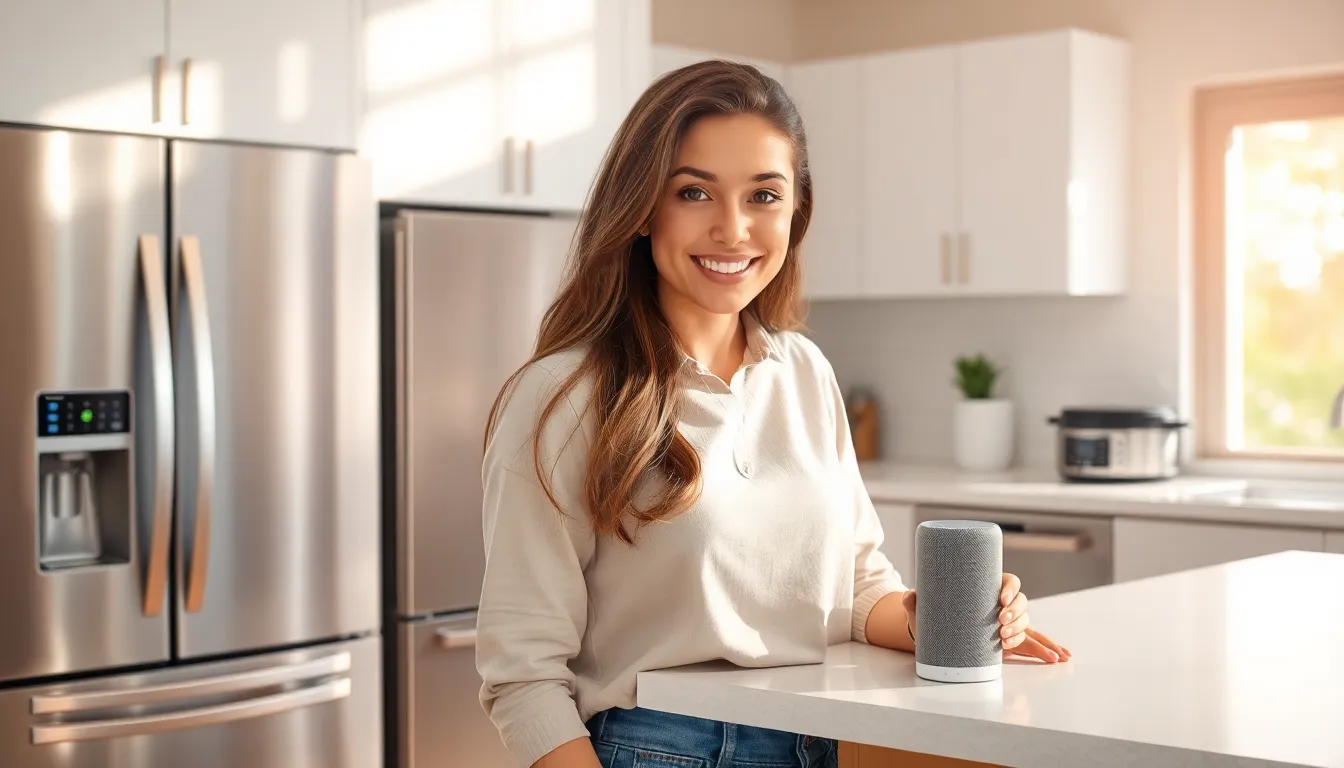Imagine walking into your home, and it greets you like an old friend. Lights flicker on, the thermostat adjusts to your perfect temperature, and your favorite playlist starts playing—no magic wand needed. Welcome to the world of smart homes, where technology transforms mundane living into a seamless experience.
Smart home potential isn’t just about convenience; it’s about creating a lifestyle that’s as efficient as it is enjoyable. As devices become smarter, they’re not only saving energy and time but also giving homeowners a chance to feel like they’re living in the future. So, buckle up and get ready to explore how these innovations can turn any house into a high-tech haven, making life easier and a whole lot more fun.
Table of Contents
ToggleOverview of Smart Home Technology
Smart home technology refers to a network of devices that enhance daily living by integrating automation and connectivity. This technology allows users to control various systems, such as lighting, security, and HVAC, remotely and seamlessly. Homeowners can manage energy consumption more efficiently, leading to considerable cost savings over time.
Devices like smart thermostats optimize heating and cooling according to occupancy patterns. Smart lighting systems adjust brightness and color based on preferences or time of day. Enhanced security systems include smart cameras and doorbell monitors that offer real-time alerts and video feeds, providing peace of mind.
Moreover, voice assistants, such as Amazon Alexa and Google Assistant, facilitate voice control over multiple devices. Integration of artificial intelligence further improves the functionality of smart home systems by learning user behaviors and preferences. These systems can automate daily routines, simplifying tasks like turning on lights or locking doors.
Interconnectivity lies at the heart of smart home technology, allowing devices to work together seamlessly. For example, when a homeowner arrives, smart locks and garage openers may activate automatically, enhancing convenience. The ability to monitor and control the home remotely through smartphone apps adds another layer of security and flexibility.
Incorporating smart home devices can significantly elevate a living experience. Some homeowners may notice increased property values due to the appeal of modern technology. As innovations continue to emerge, the potential for smart homes expands, leading to smarter, more sustainable living environments that cater to user needs.
Benefits of Smart Homes

Smart homes offer significant advantages that improve everyday living. Various aspects of daily routines become easier, more efficient, and safer with advanced technology.
Improved Convenience
Control over home devices simplifies tasks. Homeowners adjust lighting, temperature, and security systems from anywhere using smartphones or voice commands. Routine chores become automated, like setting coffee machines to brew during morning alarms. Smart appliances, such as refrigerators that monitor groceries, streamline shopping. They notify users when supplies run low and even suggest recipes. Time spent managing household tasks reduces, making life more fluid.
Energy Efficiency
Smart homes enhance energy conservation. Devices like smart thermostats optimize heating and cooling based on usage patterns, significantly lowering energy bills. Lighting systems automatically adjust depending on occupancy, ensuring lights are off when not needed. Homeowners monitor energy consumption through apps, leading to informed decisions about usage. Studies indicate that households can reduce energy consumption by as much as 30% with smart technology, promoting both savings and environmental responsibility.
Enhanced Security
Security systems in smart homes provide peace of mind. Cameras, smart doorbells, and motion sensors offer real-time alerts and monitoring, keeping homeowners informed of any unusual activity. Integration with mobile devices allows for remote surveillance, ensuring that one’s property remains safe. Users receive notifications for door openings, even when away, enhancing overall security. Advanced features, like facial recognition and two-way communication, further strengthen safety and protection measures.
Challenges and Considerations
Smart home technology presents various challenges that homeowners should consider before making the switch. Understanding these challenges helps in making informed decisions.
Cost and Accessibility
Smart home devices can range in price. Basic devices like smart bulbs might cost around $10, while advanced systems may exceed $1,000. Installation expenses add to the initial cost. Accessibility poses another issue; not all homes are equipped with the necessary infrastructure for smart technology. Older homes often require upgrades, leading to additional investment. Additionally, certain populations may face barriers due to financial limitations or a lack of technological familiarity. Overall, the upfront costs and potential installation challenges necessitate careful planning and budgeting.
Privacy and Security Concerns
Privacy remains a critical concern with smart home devices. Users often worry about data collection practices and unauthorized access. Devices like smart cameras or voice assistants collect personal information, leading to higher risks if security measures are inadequate. Recent studies indicate that nearly 30% of smart home users express anxiety over privacy breaches. Enhanced security measures are essential to safeguard personal data. Implementing strong passwords and enabling two-factor authentication significantly reduces vulnerabilities. Awareness and proactive management of these concerns can alleviate fears associated with smart home technology.
Future Trends in Smart Home Potential
The future of smart homes is promising, driven by continuous advancements. Innovations in artificial intelligence and the Internet of Things redefine how devices interact with users.
Integration with AI and IoT
Artificial intelligence integration enhances smart home experience significantly. Devices learn user preferences, optimizing energy consumption and improving convenience. For example, smart thermostats adjust temperatures automatically based on individual schedules. The Internet of Things creates seamless communication between gadgets, allowing users to control systems effortlessly. Smart speakers and voice assistants orchestrate commands, creating a cohesive environment. Users enjoy increased efficiency as devices respond to real-time data. Compatibility between various brands becomes critical, ensuring a unified smart home ecosystem.
Sustainability and Eco-Friendly Solutions
Sustainability remains a central focus for future smart homes. Eco-friendly devices reduce carbon footprints while enhancing comfort. Smart energy management systems adjust energy use based on renewable sources, minimizing waste. Appliances that monitor water usage contribute to conservation efforts, appealing to environmentally conscious consumers. Many devices now come with energy-efficient ratings, promoting responsible consumption. Integration with solar energy technologies allows homeowners to harness clean energy effectively. As society prioritizes ecological responsibility, smart homes will play a crucial role in supporting sustainable lifestyles.
The potential of smart homes is vast and continues to grow as technology evolves. By embracing smart devices homeowners can enhance their living environments while enjoying the benefits of efficiency and security. Innovations in automation and connectivity not only simplify daily tasks but also foster a more sustainable lifestyle.
As advancements in artificial intelligence and the Internet of Things drive the future of smart homes the possibilities for improved convenience and energy conservation are limitless. With careful consideration of security and privacy measures homeowners can confidently integrate these technologies into their lives. The journey toward a smarter home is not just about convenience; it’s about creating a better quality of life for everyone.








